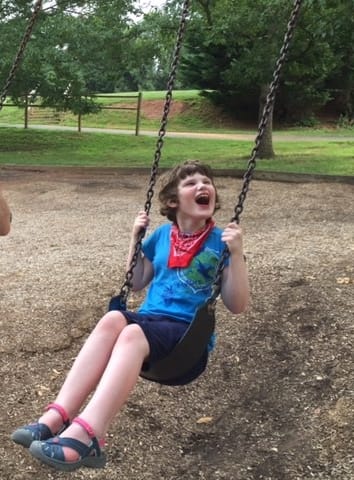
Providing children with an accessible school day is essential for learning to take place. But for kids with a CVI (brain-based visual impairments), an accessible day means more than adapting the classroom environment and materials to support functioning. Visual fatigue plays a large role in the lives of children with CVI. It can cause soar or watering eyes, headaches, blurred vision, visual focus issues, exhaustion, and generally inhibits the ability to benefit from visual input causing the student to avoid having to use their vision. These kiddos experience severe visual fatigue throughout every part of their school day as they work so hard to process and understand visual information of all different kinds.
To minimize the amount of visual fatigue they must deal with while maximizing functioning, visual breaks must be built into every class or every block on their schedule to help keep energy levels stable. These breaks don’t necessarily need to mean a pause from learning, only that the child’s eyes are getting a chance to rest. Proactively planning these breaks into a student’s daily schedule is significantly more effective for preventing a CVI meltdown from overstimulation, than waiting until they are already close to being pushed over the top by excessive visual fatigue. But it is still vital to be able to recognize the individual child’s signs that they are beginning to experience visual fatigue so an extra break can be provided. Some students may start rubbing their eyes frequently, look down or turn away from others or from the activity, put their head down, become unusually silly or giggly as a result of physical exhaustion, try to socially engage to avoid using their vision, even cry or yell depending on their personality. These behaviors are all attempts on the child’s part, whether intentionally or not, to communicate that their degree visual fatigue if mounting. This is why it is so important to heed these warnings. By doing so, teachers prevent the behavior from escalating while also showing that they care about the student’s comfort and have a safe environment where they’re needs are respected.
Types of Visual Breaks
- Kinesthetic
- Tactile
- Listening
- Full rest
Examples of Visual Beaks
- Switch to a listening activity that does not require visual engagement
- Go for a walk to take a trip around school to practice a short route
- Switch to a kinesthetic or tactile learning activity like exploring sand or clay with the hands
- Play an educational song or piece of music
- Relax in a quiet spot with noise-cancelling headphones or eye shades and a blanket or material to feel or a slinky to play with
- Use the swings out on the playground
- Go into a dark quiet break tent to listen to an audiobook
- Consider adding a designated break spot to your classroom with a pop-up sensory den
Check out CVI Scotland for More Ideas

